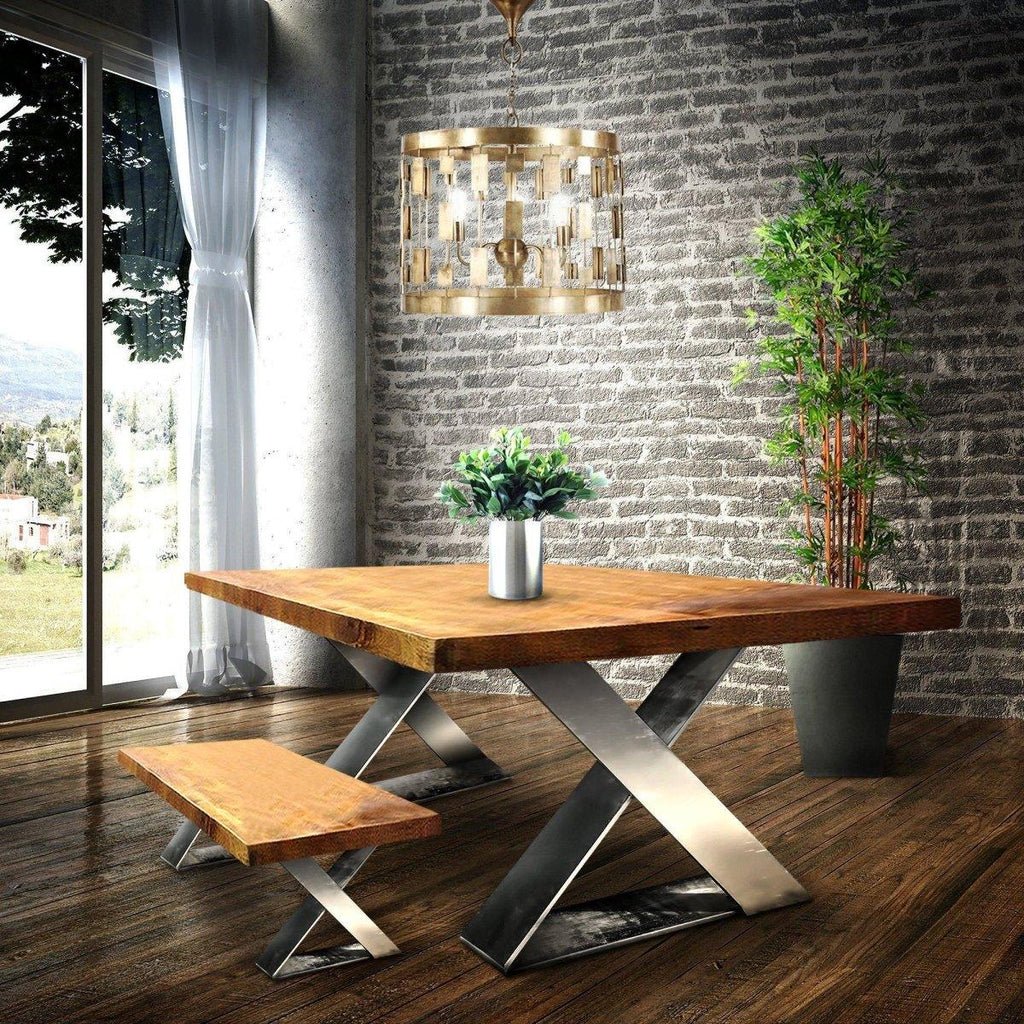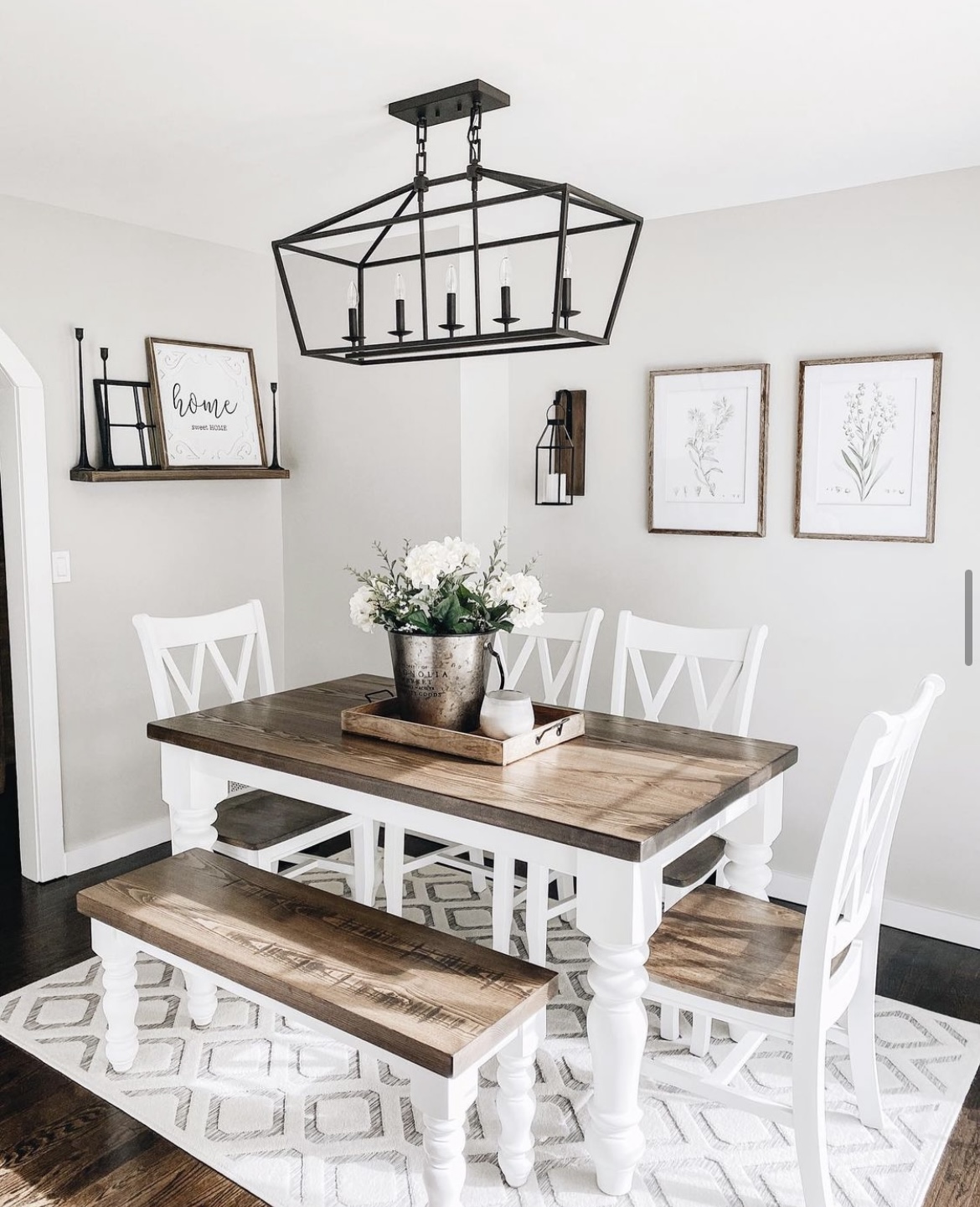How to Maintain and Care for Your Dining Room Table Legs
Wiki Article
Just How to Choose the Perfect Dining Area Table Legs for Your Home Decoration
Selecting the excellent eating area table legs is a nuanced procedure that requires careful consideration of different aspects, including your area restraints, aesthetic choices, and practical demands. The interaction in between dimensions, designs, and products can considerably affect the setting of your eating area, making it vital to approach this choice methodically.Assess Your Dining Space
Examining your dining area is essential for choosing the right table legs that complement both visual appeals and functionality. Begin by gauging the measurements of your eating location, including ceiling elevation, floor space, and distance to various other furniture. This information will assist establish the proper dimension and height of your dining table, which directly influences the option of table legs.Following, consider the design and design of your eating space. An open-concept layout might profit from table legs that provide aesthetic lightness, such as slim metal or acrylic choices. Alternatively, a more traditional setup could require durable wood legs that offer a feeling of permanence.
Evaluate the existing shade palette and products in your dining location. Balancing the table legs with these components creates a natural look that boosts the total design.
Inevitably, an extensive analysis of your dining area will direct you in making an educated decision, making sure that your table legs not only improve the visual charm however also offer practical purposes.
Consider Your Style Preferences
When selecting dining space table legs, it is important to show on your individual design choices, as they dramatically affect the total aesthetic of your dining room. Your selection of table legs can either enhance or contrast with existing décor, making it essential to align them with your recommended interior decoration theme.If your home leans towards a contemporary visual, take into consideration sleek metal or minimal wooden legs that offer a tidy, uncluttered appearance. For an extra standard technique, luxuriant wooden legs with detailed makings can add a touch of style and sophistication. Industrial designs profit from durable, resources such as redeemed timber and steel mixes, mirroring a sturdy appeal.
Furthermore, farmhouse and rustic styles often favor tough, beefy legs that evoke a sense of heat and comfort. On the other hand, if your décor is diverse, you could select unique shapes or a mix of products to produce aesthetic interest.

Evaluate Material Options
The choice of material for dining area table legs plays an essential duty in both toughness and visual allure. Typical materials consist of wood, metal, and composite alternatives, each offering distinct qualities that can influence the total look and durability of your table.Timber is a classic option, recognized for its warmth and adaptability. Hardwoods like oak and walnut provide outstanding strength and can be ended up in various discolorations to match any type of design. Softwoods like yearn are extra prone to damages and scratches, making them less ideal for high-traffic locations.
Metal legs, commonly crafted from steel or light weight aluminum, emanate modernity and commercial appeal. They are very durable and resistant to use, making them appropriate for households with youngsters or regular events (dining room table legs). Additionally, metal can be finished in various colors, enhancing the personalization opportunities
Composite materials, such as MDF or laminate, offer price and varied layouts. While commonly much less durable than solid wood or steel, they can still offer a fashionable appearance and are frequently easy to keep.
Ultimately, the material you pick ought to line up with your way of living, aesthetic choices, and the level of use your table will experience.
Determine Elevation and Dimension
Picking the suitable elevation and size for your dining area table is important for both capability and comfort. The basic elevation for eating tables usually varies from 28 to 30 inches, permitting adequate legroom for most individuals when seated. It is essential to consider the measurements of your dining area and the kinds of chairs you plan to make use of.
Furthermore, consider the this post proportions of your dining-room. A bigger table in a sizable area can develop a grand ambiance, while a smaller sized table functions well in even more click for info intimate settings. Ultimately, the appropriate elevation and size will certainly harmonize with your general design and enhance the dining experience for you and your guests.
Explore Modification Possibilities

In addition, the style of the legs can be customized to fit numerous designs, such as rustic, contemporary, or industrial. Conical legs can evoke a mid-century modern-day feel, while beefy, block-style legs may resonate with standard or farmhouse design.
Property owners can also explore shade finishes, from natural timber stains to repaint, enabling them to match or comparison with the tabletop and bordering decor.
In addition, leg height can be adjusted to suit particular seating setups or personal preferences, enhancing both convenience and functionality.
Finally, distinct embellishments, such as carvings or ornamental braces, can even more individualize the table legs, making the eating experience not simply a meal however a declaration piece in the home. By taking into consideration these personalization alternatives, homeowners can produce an eating room table that genuinely mirrors their originality.
Conclusion
Selecting the excellent dining space table legs calls for careful consideration of different aspects, consisting of the dimensions of the dining room, style preferences, material toughness, and wanted height. Customization choices better enhance the capability to attain a natural visual that enhances the overall decor. By systematically assessing these elements, home owners can ensure that the chosen table legs not only meet useful needs yet additionally add favorably to the eating experience and atmosphere of the home.Choosing the suitable eating area table legs is a nuanced procedure that needs cautious consideration of numerous components, including your area restrictions, aesthetic preferences, and useful needs.Assessing your dining room is critical for picking the right table legs that enhance both looks and performance.When figuring out size, measure the location where the table will certainly be put to ensure it fits comfortably, permitting for at the very least 36 inches of clearance around the table for easy activity. A bigger table in a sizable location can produce a grand ambiance, while a smaller sized table functions well in more intimate setups.Picking the ideal eating anchor space table legs requires mindful consideration of various aspects, consisting of the measurements of the eating area, style choices, material longevity, and preferred height.
Report this wiki page